Head On A Beer: Science and Anatomy of Beer Foam Explained!
Having a head on a beer was a pouring process developed as a sort of a “quality control” measure back when beer was traditionally stored in wooden casks. To tell if the beer was fresh, the beer was simply poured from the cask and if it had a head that implied the beer still had a Carbon Dioxide (C02) content, and was therefore fresh.
No beer foam and no head meant conversely, the likelihood that the brew was stale or of lower quality.
But in our current modern-day breweries of chrome and steel incorporating rigid sanitary procedures, up to date technologies and reliable refrigeration, is pouring a head on a beer still required.
What is Beer Head Called?
Yes, there is actually a name for it. Whilst most of us probably just refer to it as the head of beer or the beer foam, the real term is actually the “Collar” of the beer.
Is Beer Supposed to Have a Head?
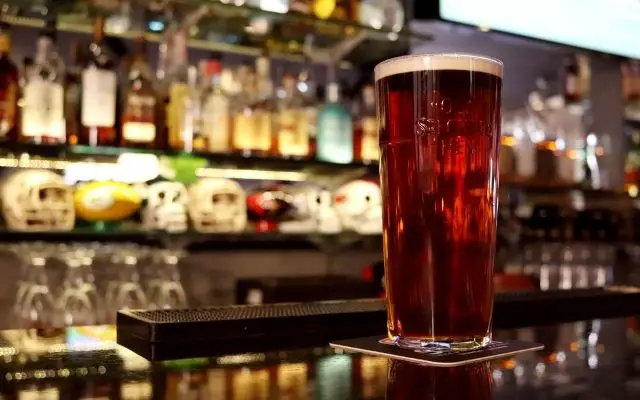
Yes, beer is indeed supposed to have a head. But, is this a Londons Pubs personal preference, or a beer trait that is actually based on science?
Whilst we know that English real ales, more often than not when distributed from a hand pump, have very little or no head, and we understand the reasons behind this as being the lower levels of carbonation present in the brewing, containment and serving process of that real ale.
But there is no doubt that it is our preference to have a head on our beer and we rarely drink lager so to us, it is much more important to have our beers served with the foam on top.
But make no mistake, there is also definitely science involved as to the reasons why.
Wherever you decide to drink your beer, you’d have to agree that when served, a perfect head of a beer is visually striking and impossible to ignore. But let’s be honest here, if you’re going to slam down your beer in a matter of minutes then it really matters not whether your beer has a head at all.
If you enjoy the taste of beer though and want to experience real taste and flavour when enjoying your beverage, then we put it to you that having a head of beer is ESSENTIAL!
How Much Head Should a Beer Have?
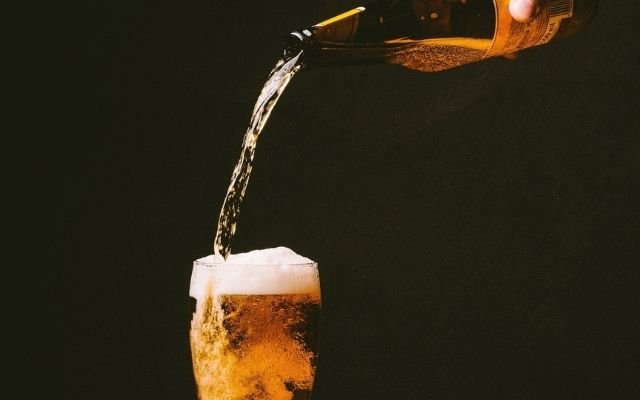
Nucleation is the name of the process of forming bubbles. In brewing, this process of nucleation is what eventually results in the materialisation of beer foam, or the Head on a Beer.
The head consists of proteins that are acted on by the hops, the yeast, and the carbonation (usually carbon dioxide) and can have a complexity that adds to the taste of the beer which is the reason so many brewers spend much time and energy trying to create the perfect amount of bubble.
The bitter Iso-alpha acids (IAAs) that derive from hops when cross-linked with the hydrophobic polypeptides of the chosen brewing grain (wheat, barley etc) results in a foam that is denser and more stable, eventually forming a head of foam that better “clings” to the glass. The special foam-forming ingredient in beer, resultant of the beer’s proteins, is called albumin. This albumin forms complex bonds with the bitter hop compound, which in turn makes it easy for bubbles to stick around. These albumins have a high rate of what’s known as “hydrophobicity”, meaning they don’t like water, so in order to help alleviate their predicament of being trapped in water, they grab a hold of a bubble of C02 and then rise to the surface of the beer alongside the C02 bubble. These proteins form coatings on the bubbles and this helps stabilise the integrity of the foam once the bubbles reach the surface of the beer.
But what does all this mean for the taste of the beer? Well, that’s the simple part really. And the not so simple part!
Firstly, we must understand that often when it comes to identifying a specific “taste”, an individual is often actually experiencing a nasal “odour”, and not a taste at all. Our senses of smell and taste are intricately interwoven, and often it’s impossible to tell the difference between the two senses. The premise with a beer head, therefore, is that the foam will bring the beverage odour compounds right to the surface of the beer and thus open up your nose so you are able to experience the full-flavours of the beer.
Whilst there is no “exact” guidance as to what the size a head of beer should be, in our experience we prefer the beer foam to be about a half-inch to an inch. We find that this is the optimum level of foam that sticks around long enough to ensure we get that full-flavour experience.
Should you Pour a Beer with Foam?
The ongoing question of whether it’s best to pour your beer with foam or without, in reality, becomes a simple observation of personal preference and taste.
But, as it’s been proven time and again that head on your beer improves the perceived taste of the product, the real question should be Why Wouldn’t you Want a Foamy Head on your Beer?
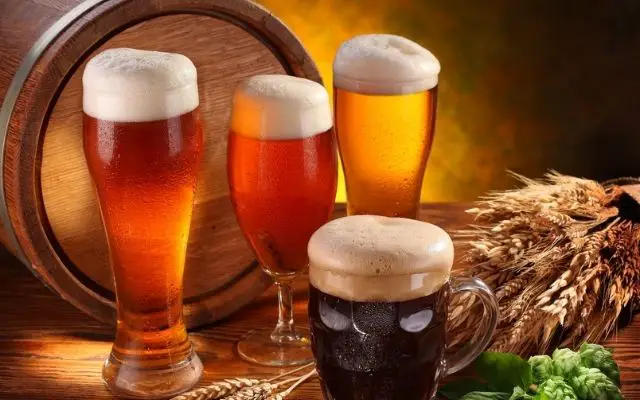
Is Having a Beer Head Good or Bad?
Beer foam is neither good nor bad for you it’s only good or bad in terms of your perceptions of the beer.
A cynic might believe a big head on a beer to be a sign that the retailer is attempting to pour less actual product to increase their margins. Whereas a beer enthusiast would likely welcome the head on their beer as they might be armed with the full knowledge that the beer beneath the head is protected from oxidisation and that the beer will taste (or smell) better with a head of foam on it.
How Long Should A Beer Head Last?
This is likely most dependant on the quality of the beer you’re consuming, your personal preference and your mind set when drinking the beer.
When drinking an ice cold beer in hot weather it’s highly likely that you won’t care at all how long the head lasts. But if, for example, you are beer tasting in Belgium, and really searching for the best beer tasting experience possible, then you’ll want the head of beer to last for the entire drink.
But a poorly crafted cheap lager for example, will always have less head than a well-developed craft beer – that goes without saying.
There are many other factors that can determine the length of the beer head such as the glassware used, the environment around you, the presence of lipstick or lip balm on the glass, the alcohol content of the beer and the levels of malt and yeast utilised in the brewing process.
The exact mechanisms of how long a head lasts on a beer is still very much an area of research (and practice) for the more scientific brewers out there.
What is Beer Lacing?
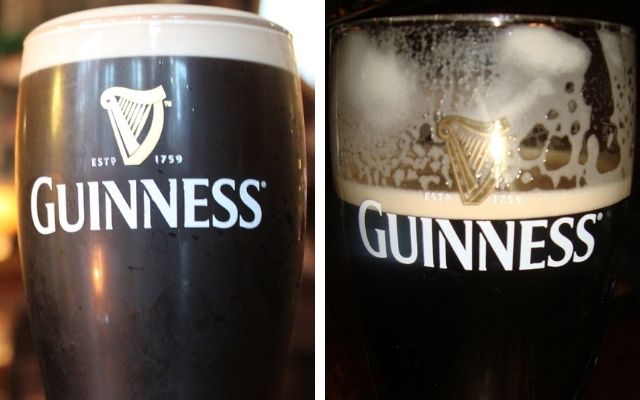
Beer lacing sounds like some sort of process in beer production or perhaps an added ingredient. However, there is no need to be alarmed, as the term beer lacing has nothing to do with either nor does it speak to the quality of the beer.
Instead, beer lacing is actually the term used to describe the residue left on the side of your glass as you consume your beer. With each sip you take the head of the beer moves down the glass but a small amount of residue (the lacing) clings to each section of the glass as you drink.
Lacing is particularly evident in beers such as Guinness as these types of beers are produced using nitrogen rather than carbon dioxide for carbonation.
So the smaller sips you take and the slower you drink your beer the more beer lacing you will notice on the glass.
What is the Beer foam Alcohol Content?
Well of course being part of an alcoholic beverage it goes without saying that the foam from the head of your beer will have an alcoholic element.
Barry Ghem, a scientist who earned his Ph.D. in Biochemistry from Michigan State University says the following:
“The liquid making up the walls of the bubbles is beer. It will be somewhat lower in alcohol that the “bulk” beer due to the greater opportunity for evaporation (increased surface-to-volume ratio)”
Does Beer Foam get you Drunk Faster?
Getting drunk faster by consuming beer head would all depend on if you actually drink it, how much you drink, and your body tissue composition.
Much like the claim that champagne bubbles (also CO2) increase the effects of alcohol so to, is it claimed that the CO2 in the head of a beer and within the beer itself, results in alcohol being able to move from your small intestine into your bloodstream quicker.
This is likely true, but again – only in some people as determined by specific factors and body types.
There is no question, however, that the consumption of food will delay the emptying of the stomach into the small intestine, so definitely eating whilst you drink will slow down any traits of inebriation.
The Bowling Green State University in Ohio did a poignant study on Alcohol Metabolism that is quite relevant to this question and may give clarity on some of the aspects and is well worth checking out.
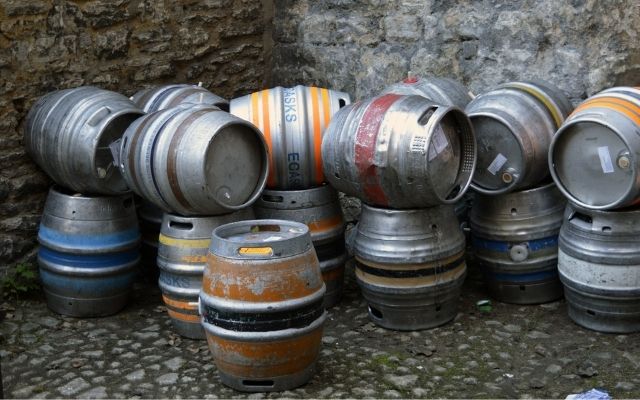
Different Foam for Different Folks!
As you can probably tell from this article (which was originally planned as a short form article), there’s much more to beer foam than meets the eye. This can obviously also be said for other aspects of beers and within the brewing process. It’s these combined factors that will add or subtract from your enjoyment of the next beer you order in, or with a glass.
Nevertheless, you can certainly be sure that when we order anything but a real ale, we’ll be EXPECTING the beer to be served with a head and we’ll always rigidly inspect our pints accordingly.
From our perspective, we believe that anyone who serves beer should do their best to please their customer first by ensuring there is just the right amount of head.
Not too little and not too much.
Todays quote comes from famous American Author and Humourist Dave Barry in which he states:
“Not all chemicals are bad. Without chemicals such as hydrogen and oxygen, there would be no way to make water, a vital ingredient in beer.”
Spot on Dave, Spot on!

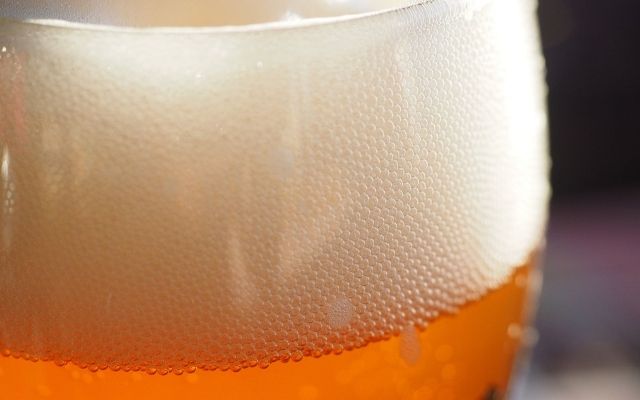


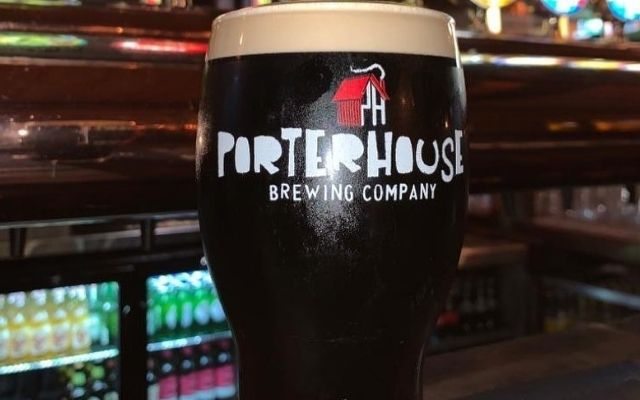

An excellent informative read LP, thank you! I will certainly show my next beer a little more consideration!🍺🍺🍺